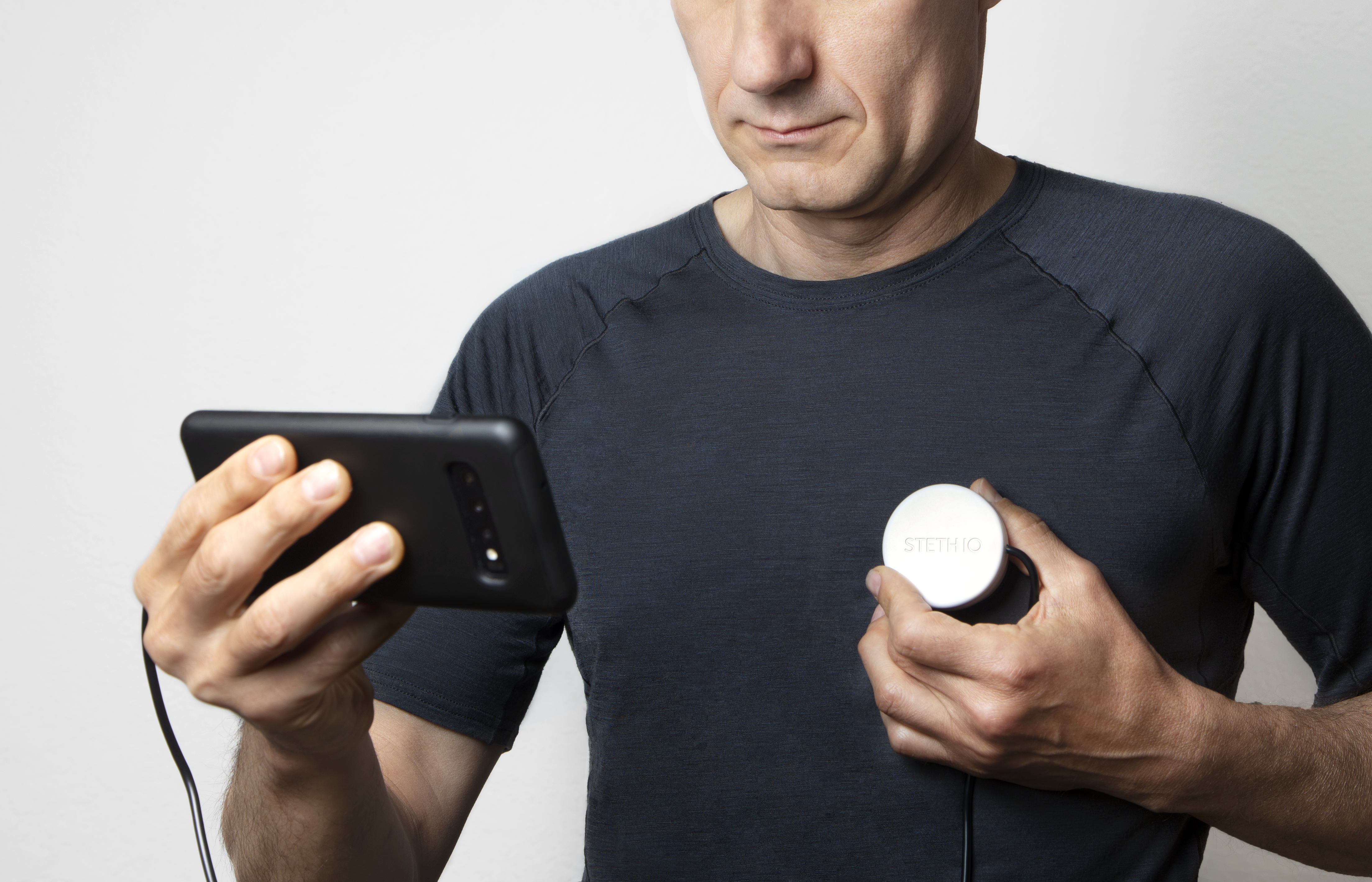
Improving Telehealth Effectiveness Through Vitals
How providers are overcoming the downfalls of traditional audio-visual telehealth with a single smartphone plug-in
The COVID-19 pandemic has been the catalyst for rapid acknowledgment and adoption of telehealth services across the country, and the new CMS policies for 2021 suggest this adoption could be long-term—even once the pandemic ends.
For organizations looking to expand their telehealth services, the top-down support being given from government agencies makes this the perfect time to strengthen telehealth and remote patient monitoring options by overcoming traditional digital health downfalls and increasing security to better serve populations with chronic and acute care needs.
Vitals are vital: bridging gaps through real-time data
While telemedicine offers greater freedom to have doctor visits from the comfort and safety of a patient’s home, concerns that virtual visits are unable to complete key components of check-ups—such as listening to heart and lung sounds—have posed barriers into long-term adoption.
Mahesh Mulumudi, MD, practicing interventional cardiologist, and CEO of Steth IO shares:
If you are seeing a patient with COPD by audio visual technology, you can ask questions about whether they are short of breath, but you cannot objectively evaluate how the air flow is in their lungs. You need to listen to the lungs to get a feel for what to do next—whether that’s triaging and helping this patient along at home, sending this patient to the ED, or referring the patient to another type of therapy. And that is just one example of a condition where this type of real time active listening to the lungs might make a difference in both chronic and acute care situations.
Steth IO—a uniquely blended hardware and software technology—is bridging this gap. Its remote cardiopulmonary monitors allow physicians to listen to heart and lung sounds as part of real-time virtual visits.
Relying on a small, device-agnostic stethoscope that plugs into patient smartphones, the technology transmits heart and lung sounds—along with visual representations of those sounds—in real time to doctors on the other end of the audio-visual call. This allows the physician to not only check vitals, but have the information needed to reliably identify potential issues and diagnosis appropriate next steps.
Strengthening patient data safety
Concerns about patient privacy continue to cause ongoing concern with telehealth expansion—with over 41 million patient records breached in 2019 (a 48% increase over 2018)—and the federal government temporarily relaxing HIPAA laws during the pandemic.
While telehealth has not been cited as the cause for these breaches, as its use expands, so do fears about meeting HIPAA guidelines and—more importantly—ensuring patient information remains safe.
HIPAA represents a set of laws that organizations agree to uphold, but accountability to those laws is limited. Working with telehealth solutions like Steth IO that are certified through security regulation entities like HITRUST—and adherent to HIPAA laws—can ensure a higher standard of protection and accountability for data shared. In addition, HITRUST certification must be renewed every two years, ensuring ongoing quality control and checks for better data safety.
Telehealth: seeing the benefits beyond the pandemic
While the need for social distancing and face masks will likely subside with the release and wide administration of a vaccine, the importance of live telehealth will not. Remote care—while important for providing safe care during the pandemic—has benefits that reach beyond what traditional brick-and-mortar doctor’s offices are better able to offer.
Telehealth has the potential to fill gaps in lower-acuity care by making it easier for care teams to see more patients with less overhead and exam rooms. Dr. Mulumudi continues:
U.S. healthcare costs and quality of care is hurting because we’re not able to keep up with the volume of patients that need care. Depending on the condition, though, almost 60% to 70% of these needed clinic visits can be done on telemedicine; they don’t really need to come into an office. Using technologies like Steth IO to truly evaluate patients remotely will allow more patients to be seen, evaluated and delivered therapy.
In addition, by bringing the check-ups to patients where they are, remote monitoring technology helps overcome barriers posed by social determinants of health that traditionally prevent vulnerable patients from getting the care they need—leading to condition exacerbation and increased likelihood of a visit to the ER.
When patients are able to complete live check-ups at home or work with devices like Steth IO and their own smartphone, hassles like lack of transportation, finding suitable childcare, or taking two hours off of work become non-existent, increasing the likelihood of the individual getting the appropriate preventative care.
The expansion of digital health offers an exciting frontier for healthcare, and by leveraging available funding, waivers, and reimbursements, implementing safe, effective solutions like Steth IO has become more affordable and profitable than ever. In addition, care costs are reduced through lower overhead with the increase in virtual visits, and more patients receive appropriate preventative care. Ultimately, unnecessary hospitalization is avoided—and patient outcomes improve.
